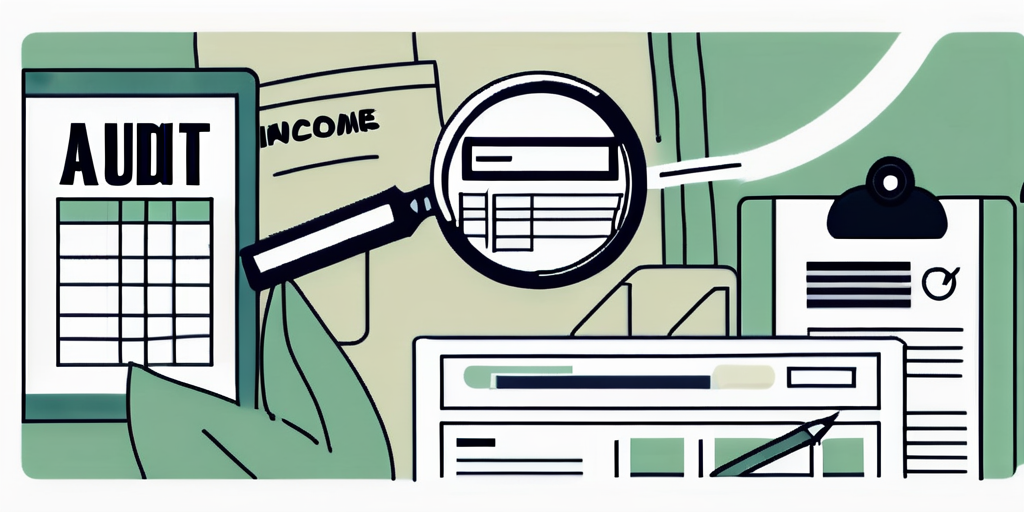Welcome, dear reader, to the thrilling world of audits and tax preparation! Yes, you read that right. Thrilling. If you’ve ever thought that tax preparation is as exciting as watching paint dry, then buckle up, because we’re about to take you on a rollercoaster ride of fiscal responsibility and financial acumen!
Now, before we dive into the deep end of this pool of knowledge, let’s make sure we’re all on the same page. An audit, in the context of tax preparation, is a review of an individual’s or organization’s accounts and financial information to ensure that all information is accurate and laws are being complied with. Sounds fun, right? Well, hold on to your calculators, because it’s about to get even better!
The Basics of an Audit
Imagine, if you will, a detective story. The detective (that’s the auditor) is on the hunt for clues (financial information) to solve a mystery (whether or not the tax return is accurate). The detective uses their keen eye for detail, their vast knowledge of the law, and their unyielding determination to get to the bottom of the mystery. That’s an audit in a nutshell. But don’t worry, unlike in a detective story, there’s usually no villain in an audit. Unless you count the tax evader, of course.

But what does an auditor actually do? Well, they examine financial records, check for accuracy, verify that taxes have been paid correctly, and look for fraud or negligence. It’s like a treasure hunt, but instead of gold, they’re looking for receipts and bank statements.
Types of Audits
Not all audits are created equal. There are several types of audits, each with its own unique flavor of fun. First, there’s the internal audit. This is when a company audits itself. It’s like giving yourself a check-up, but for your finances. Then there’s the external audit, which is when an outside entity, like a government agency, does the auditing. It’s like going to the doctor for a check-up, but for your finances.
There’s also the field audit, which is when the auditor comes to you. It’s like a house call from your doctor, but for your finances. And finally, there’s the correspondence audit, which is done by mail. It’s like getting a letter from a pen pal, but instead of sharing stories about their life, they’re asking about your finances.
The Audit Process
The audit process is a dance as old as time. It begins with the auditor notifying you that you’re being audited. This is usually done through a letter, not a singing telegram, unfortunately. The auditor will then request certain documents from you. This can include receipts, bank statements, and your first-born child. Just kidding about that last one. Or are we?
Once the auditor has all the necessary documents, they will review them. This can take anywhere from a few weeks to a few months, depending on how complex your financial situation is. Once the review is complete, the auditor will provide you with their findings. If everything is in order, you can breathe a sigh of relief. If not, well, let’s just say you might want to start looking for a good tax attorney.
Tax Preparation: The Key to a Smooth Audit
Now that we’ve covered the basics of an audit, let’s move on to the star of the show: tax preparation. Tax preparation is like packing for a trip. You want to make sure you have everything you need, so you don’t end up stranded without a toothbrush or, in this case, proper documentation for your deductions.
Proper tax preparation involves keeping track of your income and expenses throughout the year, understanding tax laws and how they apply to you, and filing your tax return accurately and on time. It’s like a marathon, not a sprint. And just like in a marathon, proper preparation can make the difference between a smooth run and collapsing in a heap before the finish line.
Record Keeping
Good record keeping is the backbone of tax preparation. It’s like the secret ingredient in a recipe for a delicious tax return. Without it, your tax return might end up tasting like a shoe. Metaphorically speaking, of course. Keeping track of your income and expenses throughout the year will make it easier to fill out your tax return and provide documentation if you’re audited.
So, what kind of records should you keep? Well, that depends on your financial situation. But in general, you should keep track of your income, expenses, home improvements, medical expenses, charitable donations, and any other information that might affect your taxes. It’s like keeping a diary, but instead of writing about your feelings, you’re writing about your finances.
Understanding Tax Laws
Understanding tax laws is like trying to solve a Rubik’s cube while blindfolded. It’s challenging, but not impossible. And just like solving a Rubik’s cube, understanding tax laws requires patience, practice, and a lot of turning things around in your head. But don’t worry, you don’t have to become a tax law expert overnight. There are plenty of resources available to help you understand the basics.
Why is understanding tax laws important? Well, it can help you take advantage of deductions and credits, avoid penalties, and ensure that you’re paying the correct amount of tax. It’s like having a map when you’re on a road trip. Sure, you could try to navigate without it, but you’ll probably end up lost and frustrated.
Filing Your Tax Return
Filing your tax return is the grand finale of the tax preparation process. It’s like the final act of a play, the last chapter of a book, the climactic battle at the end of a movie. It’s where all your hard work and preparation come to fruition.
When filing your tax return, accuracy is key. It’s like painting a masterpiece. One wrong stroke, and your beautiful landscape could turn into a blob of color. Similarly, one wrong number on your tax return could lead to penalties, interest, or even an audit. So take your time, double-check your work, and make sure everything is in order before you file.
Choosing a Filing Method
When it comes to filing your tax return, you have several options. You can file by mail, e-file, or hire a tax professional to do it for you. It’s like choosing a mode of transportation for a trip. You could drive, fly, or hire a chauffeur. Each method has its pros and cons, so choose the one that best fits your needs and comfort level.
Filing by mail is the old-school method. It’s like sending a letter instead of an email. It’s slower, but some people prefer it. E-filing is the modern method. It’s faster and more convenient, but it requires a computer and internet access. Hiring a tax professional is the luxury method. It’s the most expensive option, but it can save you time and stress, especially if your tax situation is complex.
Dealing with Errors and Amendments
Everyone makes mistakes. It’s a fact of life. And when it comes to your tax return, mistakes can happen. But don’t panic! Dealing with errors and amendments is just another part of the tax preparation process. It’s like fixing a flat tire. It’s not fun, but it’s necessary, and once it’s done, you can get back on the road.
If you discover a mistake on your tax return after you’ve filed it, you can file an amended return to correct it. It’s like sending a correction to a newspaper after they’ve published a story with a mistake in it. The important thing is to correct the mistake as soon as you discover it, to avoid any potential penalties or interest.
Conclusion
And there you have it, folks! The thrilling world of audits and tax preparation, explained in all its glory. We’ve covered everything from the basics of an audit to the intricacies of tax preparation. We’ve laughed, we’ve cried, we’ve learned about tax laws. It’s been a wild ride, but all good things must come to an end.
Remember, tax preparation is not a one-time event, but a year-round process. So keep those records, understand those tax laws, and file those returns. And if you ever find yourself facing an audit, don’t panic. Just remember what you’ve learned here today, and you’ll be just fine. Until next time, happy tax preparing!


